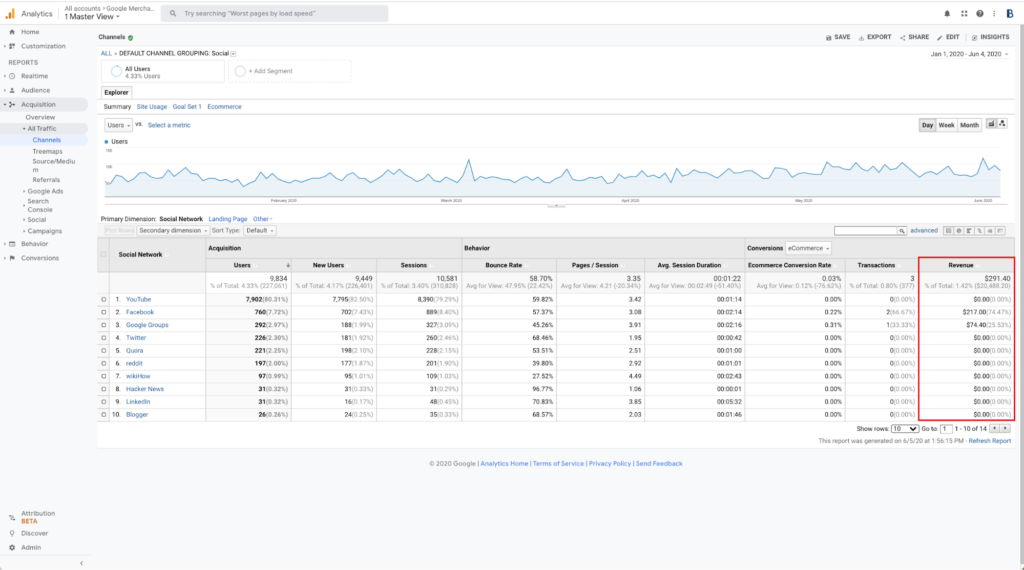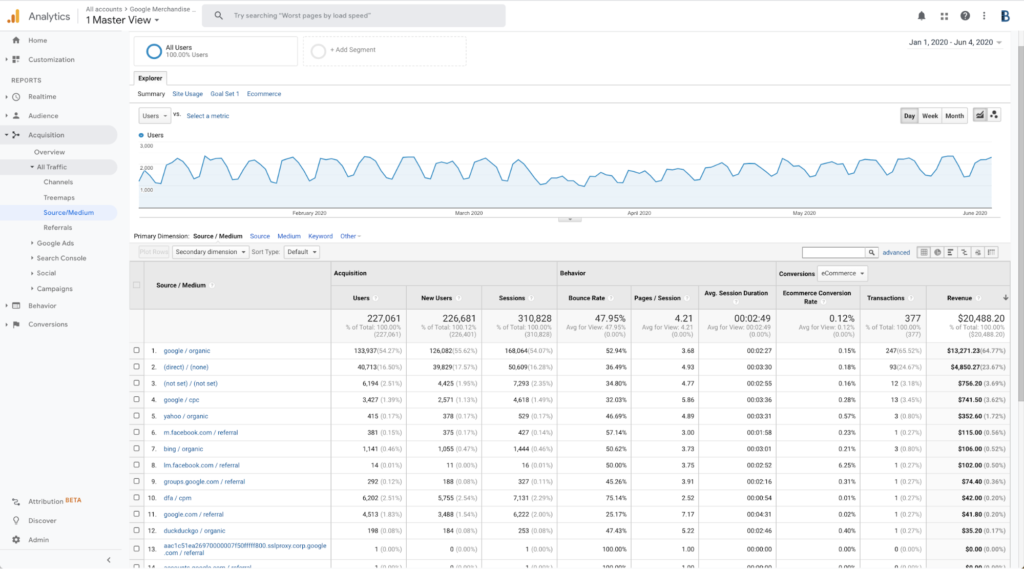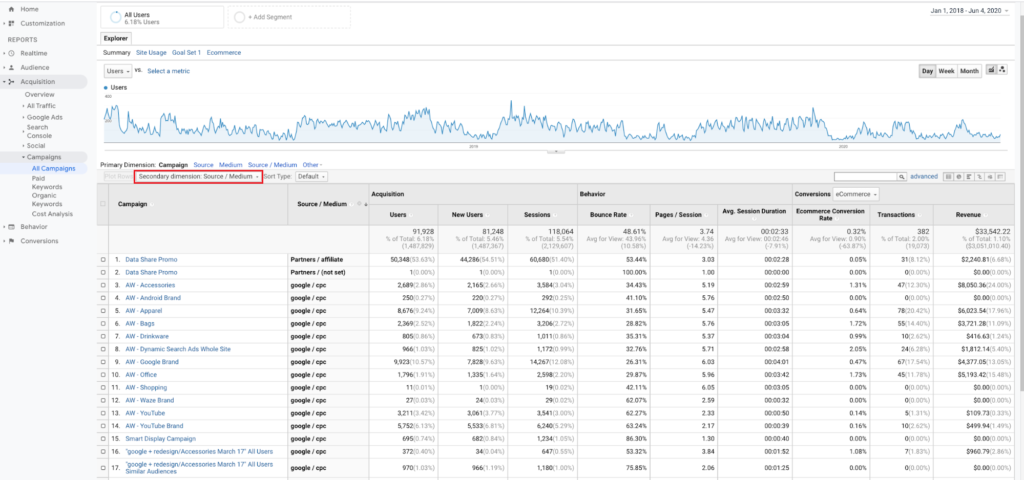Know how to track marketing campaigns and activities in WordPress; Data is the key to growth. It tells how customers respond to your marketing campaigns, so you know what’s working and what to improve to increase sales. Unfortunately, many merchants don’t use the data available, but spending a moderate amount of time understanding your metrics leads to faster revenue growth.
You can find website stats in several places, and each plays a role. For more information, there is Google Analytics. Installing primary tags on your website will give you powerful insight into which products are the most popular, where your revenue comes from, how many people are making repeat purchases, and more.
This article describes collecting and interpreting a basic report to start. Next, for advanced users, two new aspects of him go one step further: UTM Tracking and Google Analytics Pro.
Track marketing campaigns & activities: If you’re just getting started
Tracking marketing campaigns and activities in WordPress, if you don’t understand the meaning of the numbers, start tracking immediately. Moreover, the sooner you start collecting data, the more information you need to analyze at the right time.
WooCommerce offers free Google Analytics extensions that simplify using crucial Google Analytics features. You can find key trends and tailor your store to your customer’s needs with a little research.

And the report above is an excellent example of the powerful insights you can discover with Google Analytics. You can find it by navigating to Acquisition → Overview. You can see traffic volume from various broad sources (social media, organic, referral traffic, etc.), along with the bounce rate and the number of pages viewed for each. More importantly, you can see the revenue attributed to each source on the far right.
Click on a category (marked in red) in the left column to access more information. For example, selecting “Social” will show you a list of the specific platforms (Facebook, Twitter, Pinterest, etc.) that brought traffic to your site and all the same information (traffic volume, pageviews, bounces).
Track marketing campaigns & activities: Traffic report in Google Analytics

You can find the revenue assigned to each platform on the far right by tracking marketing campaigns and activities in WordPress. In this case, YouTube generates more traffic but no sales. Based on the traffic numbers alone, you might think you need to spend more on YouTube advertising, even if it’s not generating actual sales – revenue data is key. In this case, Facebook is the main source of income from social media traffic.
And this is just a fraction of what you can learn. Learn more about Google Analytics basics here. Then, if you’re ready for advanced analytics, read on!
For growing stores
As your store grows, keep an eye on analytics even more. A one percent improvement in conversion rate can equate to thousands of dollars in new sales.
In this section, we’ll look at two more advanced analytics tools that allow you to make better data-driven decisions for your store. Any of them, if used alone, will increase your tracking capabilities. When combined, and will equip you with the most advanced data interpretation available. Know how:
- Track specific traffic sources and get more accurate data using the Google Analytics dashboard.
- Access advanced e-commerce reports.
Track specific fonts with UTM parameters
Note: UTM stands for “Urchin Tracking Module” and comes from Urchin Software Corporation, which Google acquired in 2005. They created an application for tracking and measuring web traffic, later known as Google Analytics.
UTM parameters are extra information you can include at the end of links in your ads. It doesn’t affect the URL’s destination, but it provides Google with important information about the source of the click. You may see a link with the UTM parameter added if you’ve seen very long URLs that don’t make much sense.
Why should online stores use UTMs?
Tracking marketing campaigns and activities in WordPress using parameters allows you to collect more targeted data about the results of your campaigns. You can differentiate r site visitors from different sources, advertisements, and more and use this information to make better and more accurate decisions.
Without UTMs, Google Analytics can show that 20% of your traffic came from Facebook and had a 60% bounce rate. But with UTMs, you can separate paid traffic from organic or distinguish between traffic coming from different campaigns.
Suppose you have a promotion to celebrate the store’s anniversary. The UTM parameter indicates that a banner ad with a red background will generate traffic with different attributes (low bounce rate, high average order value, etc.) than the same ad with a blue background. You can also distinguish between target groups and campaigns.
Serving ads
When serving ads, the platform you use typically provides basic results. For your anniversary campaign, Facebook can tell you which ad received more clicks, had a lower cost-per-click, or resulted in more sales. (Of course, you need to have the Facebook tracking pixel installed correctly – this extension does the work for you).
However, you cannot see what is happening on your site between ad clicks and conversions. How many pages are your visitors looking at? What percentage of people add items to their cart or try coupon codes? Which pages are most popular with users who click on each ad?
Perhaps you’re targeting two audiences with your anniversary promotion: your existing customer base and new people who are interested in your product and live in a particular area. With UTM, the most popular page for new people was the ‘Approvals’ page, while traffic from our existing customer base may prefer the ‘New Releases’ page. Armed with this knowledge, you can improve future campaigns by optimizing your ads to promote clearance items to new audiences and new products to existing customers.
Influencers and affiliates
Many stores work with influencers and affiliates for promotion. You can use your UTM to identify this traffic and determine which partner offers the most value.
See in action
Previously, you found that YouTube was responsible for most social media traffic, but Facebook was responsible for most sales. And without UTMs, you wouldn’t be able to distinguish between organic and paid Facebook traffic, so if you’ve paid to boost Facebook posts in the past and seen that Facebook accounts for most of social media revenue, you can assume that you should run more promotions.
And with UTMs, you can also see that most of your Facebook revenue is from “Facebook.com/referencia” rather than what you used for the ad link, “Facebook.com/CPC.” But, again, this is organic traffic – you might think twice about investing more money in ads.
Track marketing campaigns & activities: Referrals report in Google Analytics

Moreover, you can do this for more than social media referrals. First, go to Acquisition → All Traffic → Source/Media to see results for all your source/media tags. Then, in the far right column, sort your revenue from highest to lowest to see the most impactful sales sources.

Go further
Tracking marketing campaigns and activities in WordPress, let’s see a level deeper to see why UTMs are so powerful. So far, you’ve only used UTM tags for source/medium and already have much better data. But let’s say you’re not just boosting an occasional Facebook post but have multiple campaigns simultaneously. Distinguishing between paid and referred Facebook traffic doesn’t help you determine which paid Facebook campaigns are working and which should be stopped. This is where campaign tags come into play.
Go to Acquisition → Campaigns → All campaigns.
You can see the results of each named campaign and measure its performance. Add a secondary dimension (highlighted in red) for source/media if you have multiple campaigns on multiple platforms. This allows you to distinguish the best-performing campaigns on each platform quickly.

Track marketing campaigns & activities: Make your UTMs
While UTMs can be created manually, it’s easy to make mistakes. We recommend Google’s URL Builder to simplify this process.
You can use any text you like for the parameters, but remember:
- These are publicly visible. And don’t include anything you wouldn’t want your customers to see.
- Establish a pattern and be careful when using parameters in ways other than their original intent. UTMs are case sensitive; without standard procedures, data can quickly get disjointed and complicated.
- Keep a spreadsheet of all the links you create. Use it to track links and as a place to keep context and additional information.
- And now that you’ve segmented your data and brought it into one place for review, it’s time to get even deeper insights.
Google Analytics Pro, advanced reporting for Ecommerce
Google Analytics Pro helps merchants leverage the advanced features of Google Analytics to track each visitor’s journey better and identify small trends that can lead to big opportunities.
Access a visual funnel showing where visitors abandoned checkout, how many tried coupons, and how many customers logged in and out of their accounts. Use all this information to increase your sales. And you can even track when a purchase is completed, but the user doesn’t reach the thank you page. Unfortunately, many ad platforms rely on this thank you page to provide conversion data and may miss out on this type of conversion. Google Analytics Pro delivers more accurate data.
Track marketing campaigns & activities: Google Analytics Pro simplifies
Even without UTMs, Google Analytics Pro simplifies access to the deeper insights available as part of Google Analytics; you simply won’t be able to segment traffic based on specific attributes. So you can get new insights into Facebook traffic, but you won’t distinguish between paid and organic traffic, let alone specific campaigns.
Here is a chart comparing the free Google Analytics extension and Google Analytics Pro. And in summary, the Pro version offers everything available in the free version, but with a little more power.
- Track average order values, conversion rates, and sales by product or category. Then filter them by other metrics to get better conclusions, such as which traffic source provides the highest average order total.
- Get more accurate user counts. For example, exclude store managers from tracking, so they don’t skew your data.
- Use advanced event tracking to identify trends and areas that need improvement more accurately. For example, see when coupons are added or removed, items are added to carts, quantities are changed, customers log in, select a payment method, and more.
- Benefit from improved link attributes. And track multiple links to the same URL on a single page.
- Identify hidden sales metrics when the checkout completes but the buyer doesn’t land on the thank you page.
The post Track Marketing Campaigns & Activities in WordPress appeared first on Visualmodo.


0 Commentaires